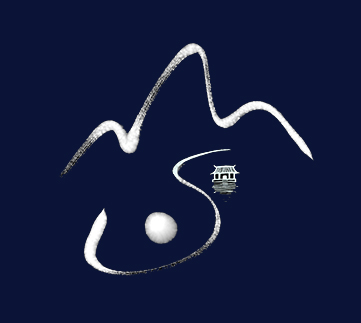Wudang Mountain is the cradle of Wudang internal exercise. Over hundreds of years Anceient Wudang Monks have developed this group of internal practices which combine physical fitness, internal work, attack & defense into one.
Wudang Five Animal Qigong is one of the most important exercises practiced by Wudang Taoists. Historically Wudang Taoists were required to practice these five forms daily. This practice is comprised of five major forms including Tortoise, Snake, Dragon, Tiger & Crane. This grouping of forms is derived from some of the most powerful & treasured creatures in traditional Chinese culture.
Historically Wudang Taoists were required to practice these five forms daily. This practice is comprised of five major forms including Tortoise, Snake, Dragon, Tiger & Crane. This grouping of forms is derived from some of the most powerful & treasured creatures in traditional Chinese culture.
The names of the acts:
The form of tortoise
The tortoise, in Chinese traditional culture, was one kind of creature who could predict the future, enjoy a long life and clever, do everything steady and quiet. In the five elements, the tortoise belongs to water; so practicing this regimen can increase energy, strengthen the kidney, and make the body soft and flexible.
1.Starting position
2. Guarding the breath into the pubic region
3. Having a deep and long breath
4. Xian-Yu Putting up the ancient cooking vessel  5. Creeping on the earth to look for the root
6. The tortoise grasping the moon
7. The tortoise playing with the water
8. The tortoise spitting out the medicine
Closing position
5. Creeping on the earth to look for the root
6. The tortoise grasping the moon
7. The tortoise playing with the water
8. The tortoise spitting out the medicine
Closing position
The form of Crane
The crane, in Chinese traditional culture, had the following characters: transcendency and escaping from the common world, elegance and purity. In the five elements, the crane belongs to fire; in the body, the heart. Practicing this regimen often can make the man vigorous in energy, salubrious in mind and mood.
1.Starting position
2. Guarding the breath into the pubic region
3. Flying leftward and right ward
4. The crane displaying the wings
5. The crane playing with the water  6. The crane standing on the peak
7. The crane is going to fly
8. The crane cleaning the eyes.
Closing position
6. The crane standing on the peak
7. The crane is going to fly
8. The crane cleaning the eyes.
Closing position
The form of snake
In Chinese traditional culture, the snake and the tortoise were a unity, called Xuanwu. In the five elements, the snake belongs to metal; in the human body, the lung. Practicing the regimen often can cultivate the lung and make the body soft.
1.Starting position
2. Guarding the breath into the pubic region
3. Turning around the body
4. The snake twisting the willow
5. The snake moving out of the den
6. The snake moving into the den
7. The snake creeping on the earth
8. The snake turning over the body  Closing position
Closing position
The form of tiger In Chinese traditional culture, the tiger was the symbol of power and unruliness. In the five elements, the tiger belongs to soil. Practicing the regimen often can cultivate the spleen and stomach, strengthen the bones and muscles. 1.Starting position 2. Guarding the breath into the pubic region 3. The tiger washing the hands and face 4. The tiger crouching down to listen to the wind 5. The tiger attacking at the prey 6. The tiger standing there still to look around 7. The tiger swallowing the prey 8. The tiger turning back the head Closing position
The form of dragon In Chinese traditional culture, the dragon was a creature of wisdom and cloud, with the characters of predicting the future and ordering the clouds to rain. In the five elements, the dragon belongs to wood. Practicing the regimen often can cultivate the liver and gallbladder and make vigorous in blood and breath. 1.Starting position 2. Guarding the breath into the pubic region 3. The dragon putting out the paws 4. The two dragons playing with the pearl 5. The dragon waving the tail 6. The dragon twisting to control the pearl 7. The swimming dragon and the flying phoenix 8. The dragon diving into the sea Closing position
This DVD include 5 forms of Tortoise, Crane,Snake, Tiger & Dragon. all 5 animal's demo,introduction and teaching webpage link to wudang 5 animal qigong,

